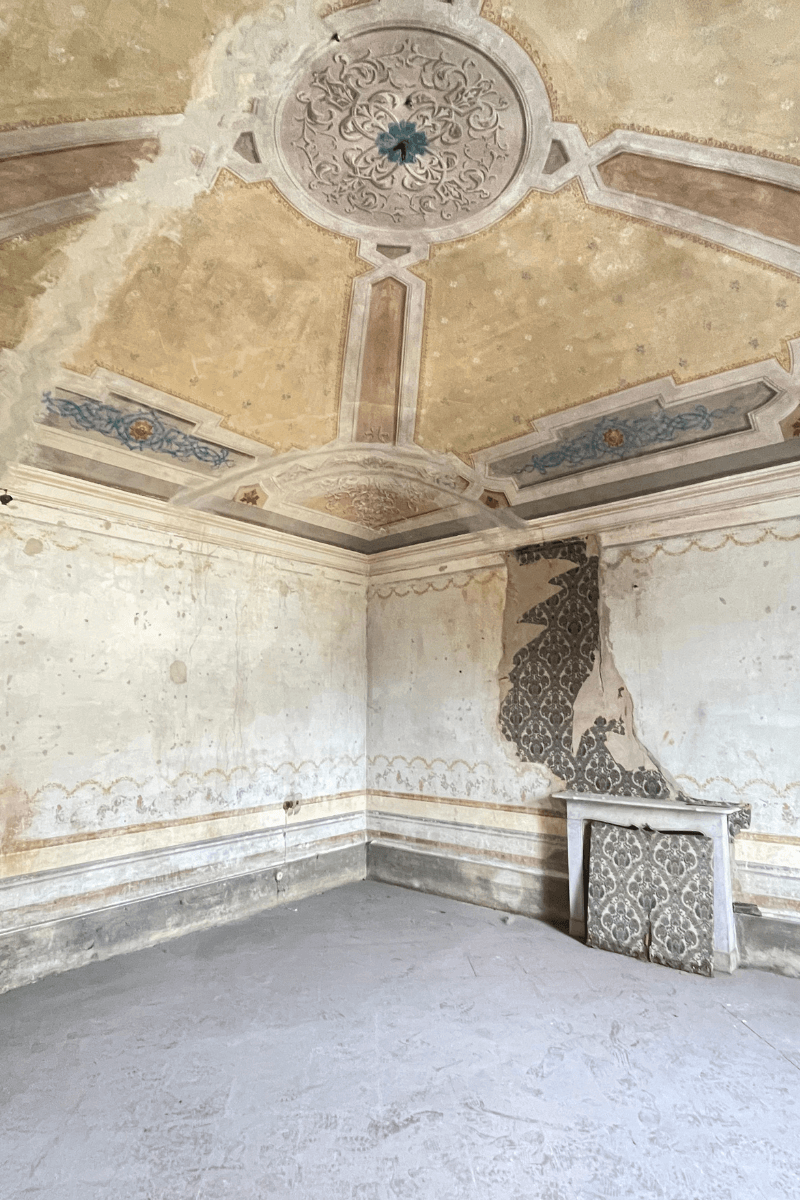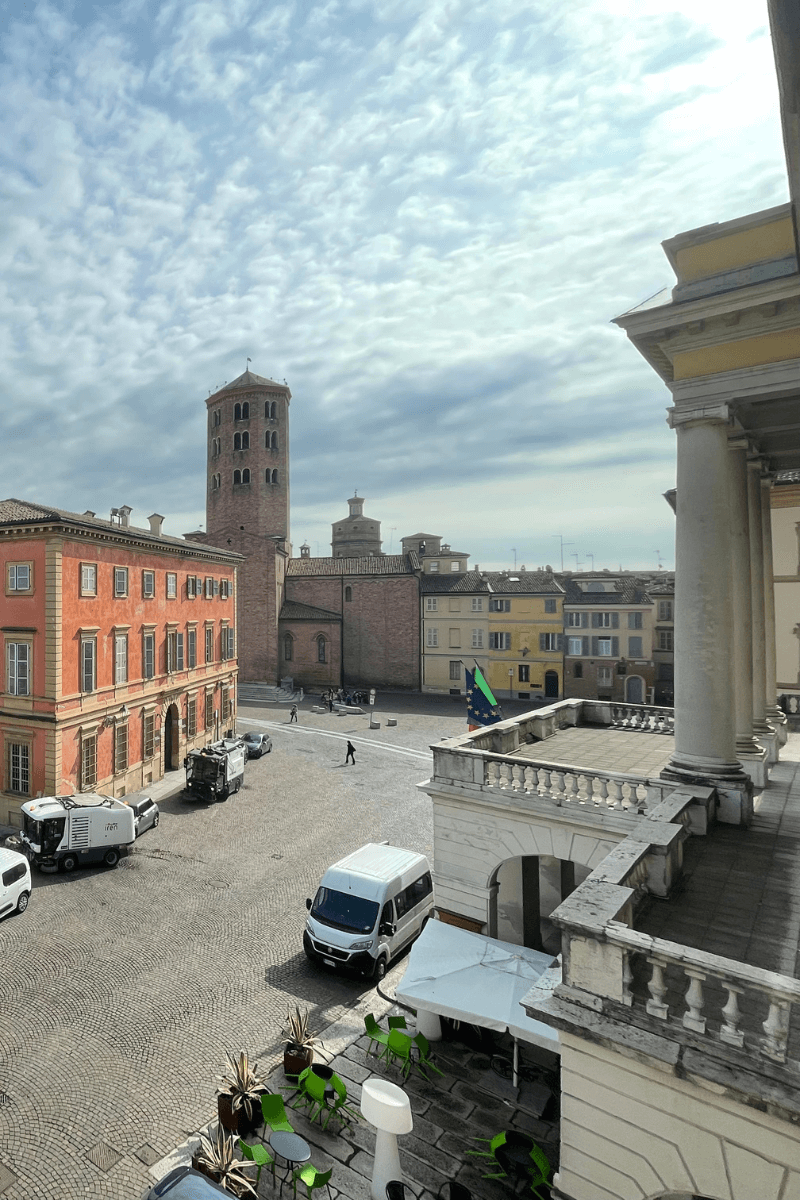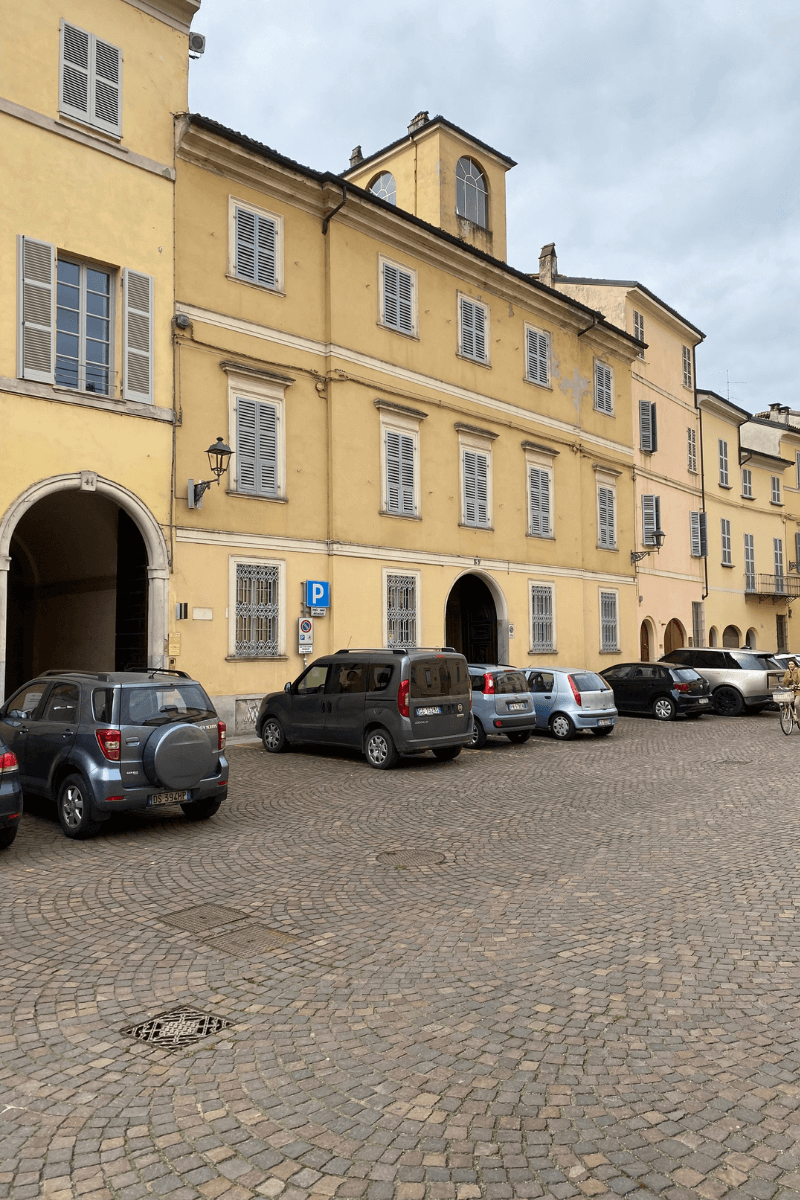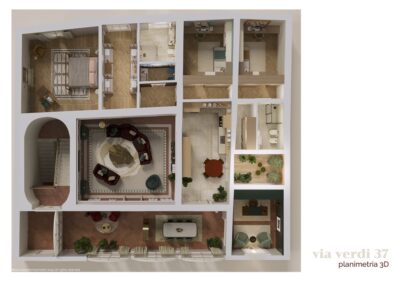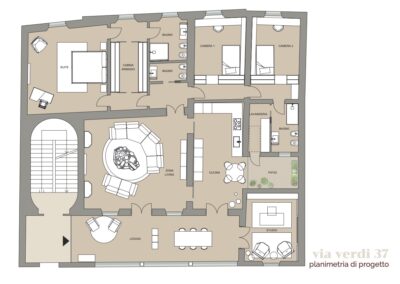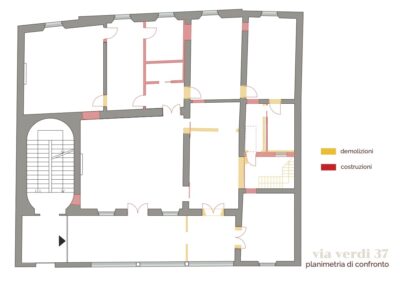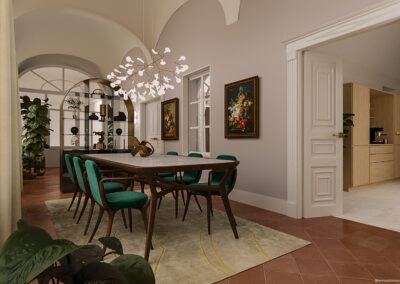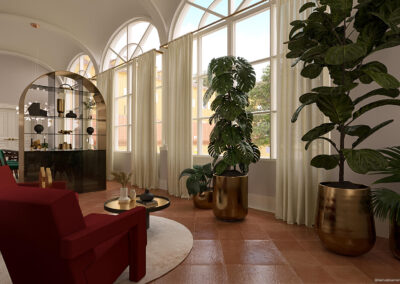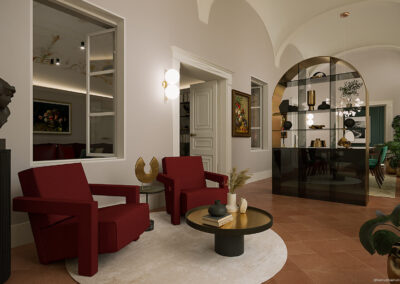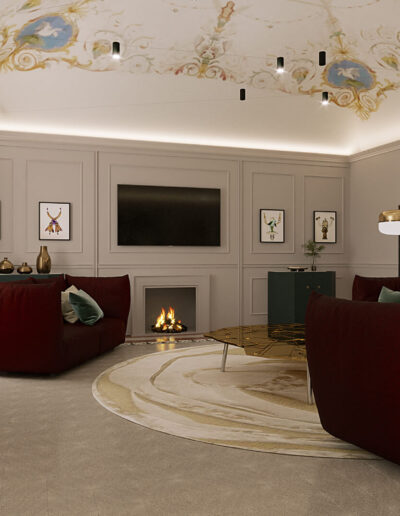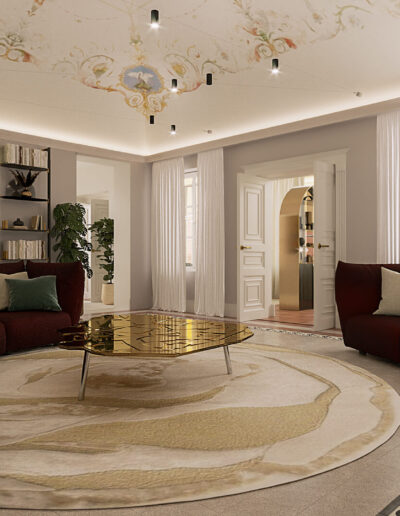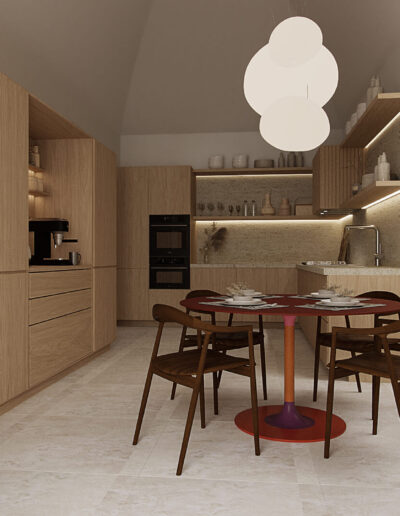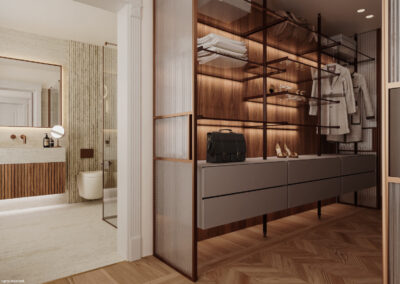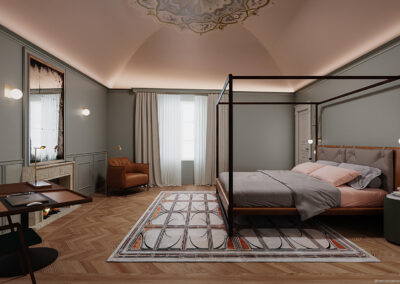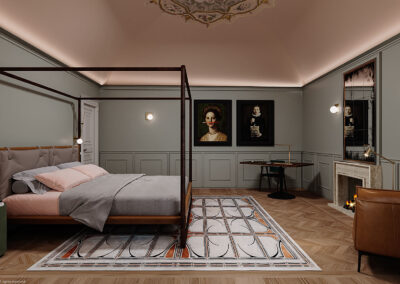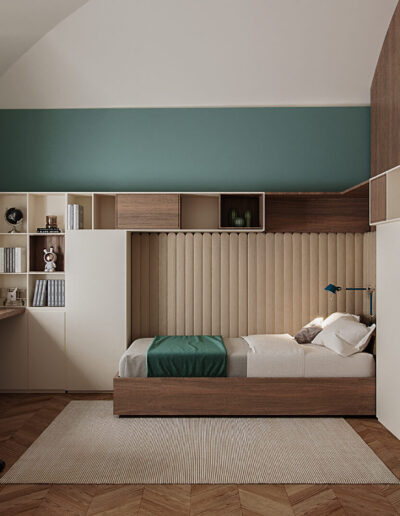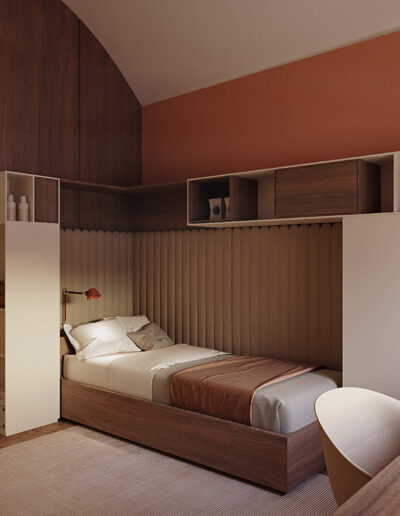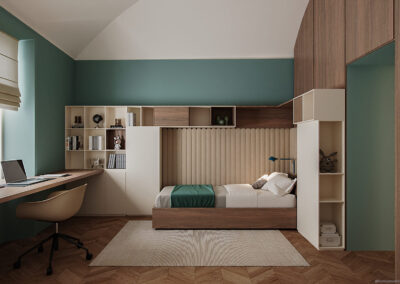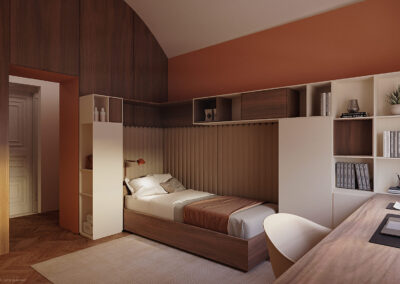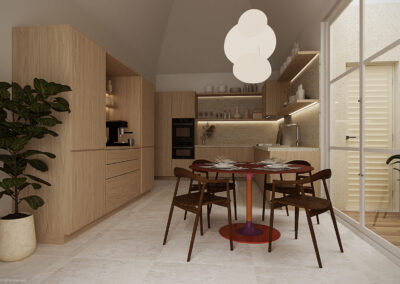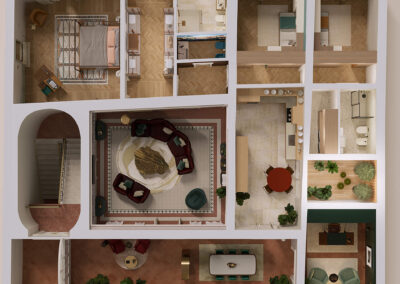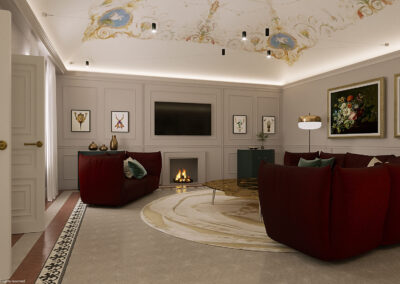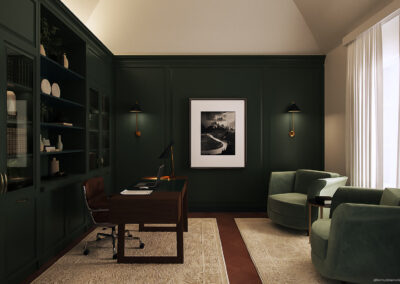Luxury interior design
PALAZZO COTTA-CREMONESI
Rebirthin elegance and triumph of style
“Piacenza is a large and populous merchant city on the banks of the Po River. It has many interesting highlights such as the fountain of Caesar Augustus, military fortifications, the Cittadella, beautiful churches such as Santa Maria di Campagna, Sant’Antonino, San Giovanni, San Sisto, Sant’Agostino. Remarkable palaces of noble families: the Landis, the Scottis, the Anguissolas. The countryside of Piacenza is very fertile and gives excellent wines and cheeses. In its territory there are saline springs, iron mines, woods and hunting reserves. The healthy climate favors the longevity of the inhabitants. Piacenza is rich in waterways and history, thanks to the powers that have coveted its dominion, up to the present duchy of the Farnese family.”
A. De Rogissart, writer and traveler, 1700
Details
Status: Concept
Address Piacenza, via Verdi 37
Interior surface: 330 mq
Floors: 1
Rooms: 9
Bathrooms 3
Extra features: giardino d’inverno, loggiato, cortile interno.
Description
Cotta-Cremonesi Palace is located in one of the main streets of Piacenza, just a few steps from Piazza Sant’Antonio. It is an elegant mansion dating back to the first half of the 18th century, home to members of the city’s upper middle class and expertly restored according to the design by the architect Gianantonio Perreau, respecting all the charming elements of the period.
The stately mansion, in a context of absolute prestige, is defined by a central courtyard, porticoed on one side, and has the layout features typical of stately residences
This historic building is an ideal choice for those who want to relive history with a modern twist, as the renovation project has focused on creating cozy and refined spaces where every detail contributes to an atmosphere of comfort and sophistication.
HISTORICAL BACKGROUND
The origins of Cotta-Cremonesi Palace date back to 1737, when, according to archival documents, it was owned by notary Dr. Alfonso Cotta and then by the Cremonesi family.
In 1810 the building passed into the hands of the Gazzola brothers, only to be sold a few years later to Giuseppe Bruzzi; later, Judge Pietro Bruzzi had it raised and the façade redesigned, topped by a turret designed by Gianantonio Perreau.
Today the building appears in a precious context, characterized by the presence of many historical buildings and the adjacent Piazza Sant’Antonino, which stood up around the ancient basilica dedicated to the patron saint of Piacenza. The pilgrimage route of Via Francigena passed in front of the church, which is why the monumental entrance to the church was moved from West to North.
To the left of the palace we have Teatro Municipale. Sumptuous example of late 18th century architecture, it was built at the beginning of the 19th century on the land of the extinct Landi Pietra family.
FONTANA Milano 1928’s proposal for the apartment on the second floor of the building fully meets the historical value of the building and its context. The project aims at reviving, through careful renovation and optimization of the interior spaces, a mansion with a distinctive style, where carefully selected materials and finishes give the rooms a touch of contemporary elegance.
The volumes and rooms of the property can be identified as follows:
2: Second floor: entrance loggia, dining room, living area, kitchen, winter garden, study, master suite with walk-in closet and en-suite bathroom, two single bedrooms, two bathrooms
ENTRANCE and LOGGIA
Access to all floors of the property is provided by a large, stately staircase that begins at the bottom of the hallway located to the side of the building’s central courtyard.
The entrance to the apartment is located directly at the end of the staircase and takes place on a loggia area overlooking the inner courtyard. The loggia is a continuation of the previous layout of the rooms, a space with an elongated shape, what was once a place of passage, becomes today a large living area to be experienced. The three large arched windows and the wide vaulted ceilings have been kept, giving the rooms a distinctive character. These are examples of how the design concept aims at a harmonious integration with the existing architecture, respecting the peculiarities of the property and preserving its authenticity, but at the same time offering solutions capable of meeting contemporary needs of style and comfort.
Inside the loggia, after an initial living area that characterizes the actual entrance, behind a furnished partition there is the dining room. A large table with a minimalist design and comfortable seating characterize this space dedicated to conviviality.
Living room
The living room is the heart of the house, a large room with a regular layout separating the living area from the sleeping area.
From a decoration point of view, both grotesque frescoes on the ceiling and the original flooring were recovered and preserved as a distinctive feature of the historical value of the building.
The arrangement of the furniture in the room was designed starting from the central low table. It is a piece of design created specifically for this environment, giving a thoughtful balance between innovation and tradition, and combining two typically made-in-Italy elements: excellent craftsmanship and iconic design.
Even the choice of works on the walls is a harmonious mix of modern and contemporary art, neither dominating the other, but rather in dialogue with the past and the present. Two pastel-colored sideboards, a TV and, for colder evenings, a fireplace with a simple patterned frame complete the space.
KITCHEN
Next to the living room we find the kitchen, which was subject of the most significant structural changes. The demolition of a wall made allowed the increase of floor area and the addition of a second door to the living room.
The furniture is of light wood and stone to create a modern and elegant environment, which in its simplicity offers great functionality. There is an L-shaped kitchen set with hi-tech functional elements, a fitted cupboard with large counter along the free wall and a round table.
Another important modification that contributed to the addition of contemporary elements, in compliance with the current planning regulations, concerned the staircase inside the apartment that allowed access to the loft. Since it did not have the necessary height to make it certifiable, it was decided to eliminate it together with the staircase in order to create a tasteful solution that would preserve the integrity of the original building and at the same time renew the spaces according to the fashions of the contemporary context. Therefore, it was decided to create a winter garden accessible from the kitchen through a large sliding glass door. A transparent cover is planned for this space to allow natural light to access the apartment in all seasons. From this space, it is possible to access the laundry room and the relevant bathroom.
MASTER SUITE
The sleeping area is on the street side, where windows are smaller and openings more limited. The rooms are completely soundproofed, thanks to an in-depth study of internal acoustics carried out during the design phase. The renovation and conservative rehabilitation of the property is complemented by the modernization of the installations to ensure energy efficiency and safety of the spaces.
The large master suite is a minimalist design environment where period furnishings, such as the large mirror or the marble fireplace, coexist with modern elements such as the four-poster bed and the directional wall sconces. The ceiling design has also been preserved, while the flooring is Hungarian Chevron parquet.
The master suite has a large dedicated walk-in closet and a bright private bathroom.
SINGLE BEDROOM
Completano l’appartamento due stanze singole gemelle, complete di letto, mobile a muro e scrivania.
Completing the apartment are twin single bedrooms, complete with bed, built-in furniture and desk.
In defining the entire project, the architectural research also extended to the definition of a rich and sophisticated color palette. Neutral tones blend harmoniously with touches of vibrant color, creating a visual balance that enhances the architectural beauty of the interiors and continuously recalls the historical value of the building and its context.
Neutral tones blend harmoniously with touches of vibrant color, creating a visual balance that enhances the architectural beauty of the interiors and continuously recalls the historical value of the building and its context.

